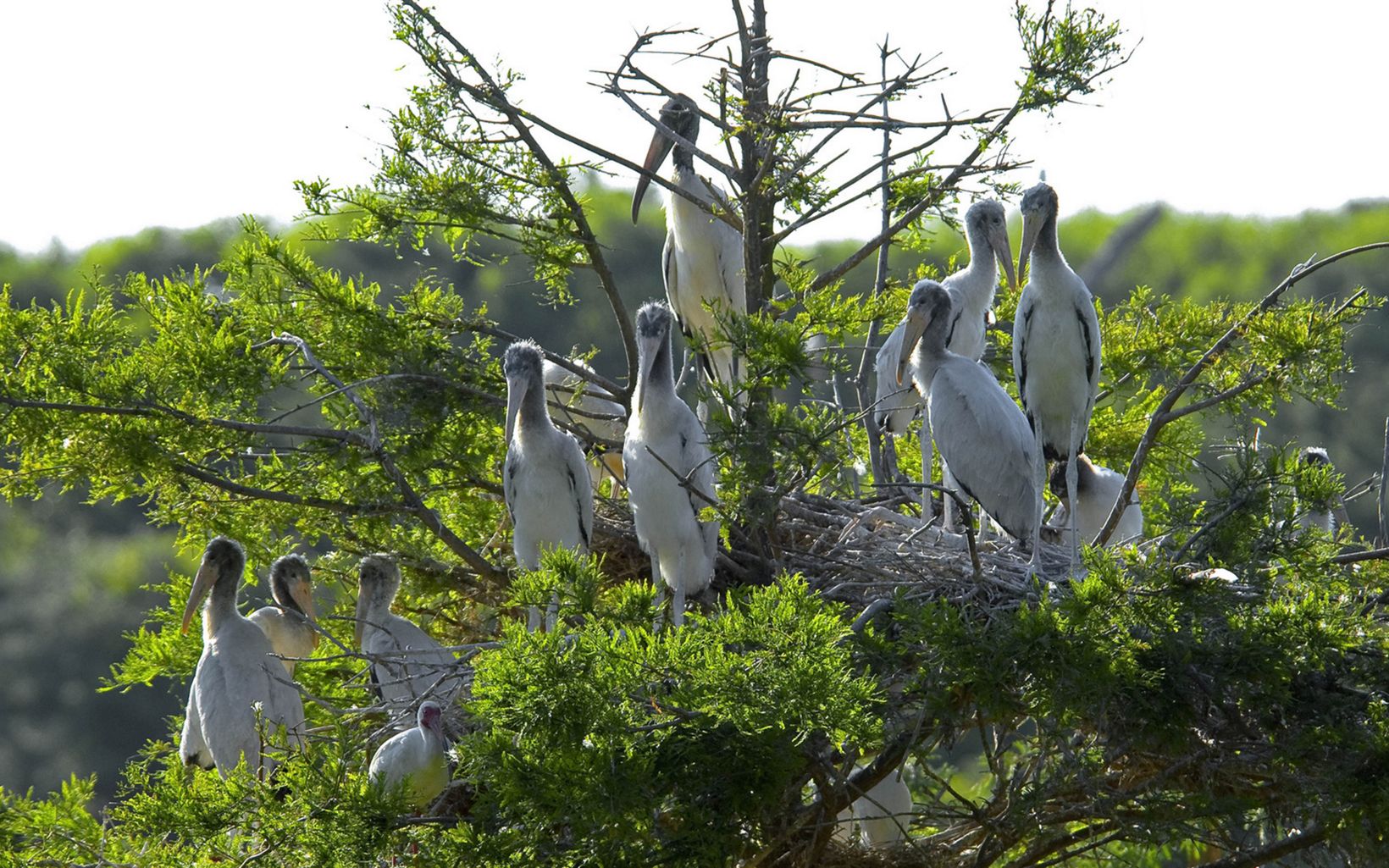Any time you see water in Georgia, whether you’re driving over one of the state’s mighty rivers or walking under an umbrella during a rain storm, you might be seeing a part of the Georgia coast.
Well, maybe not quite any part of the state.
But it’s true that much of the water in Georgia eventually drains to the rivers and tributaries that make their way to the Atlantic Ocean.
That’s why The Nature Conservancy’s coastal conservation work in Georgia is so important.
The Georgia Coast Project includes more than 100 miles of coastline, 14 barrier islands, 300 square miles of open Atlantic Ocean, nine major estuaries (salt marsh and open water), 3,400 miles of tidal shoreline, expansive areas of freshwater tidal forests, maritime forests and long-leaf pine forests.
Vast forests of pines, cabbage palms, and live oaks draped with lacey Spanish moss stand over a dense understory filled with shrubs and smaller trees like American holly, cherry laurel, red bay, saw palmetto, and wax myrtle.
This forest landscape gently eases into expansive salt marshes. Here, blankets of smooth cordgrass unfold to meet the western edge of barrier islands where dunes of hard-packed white quartz sand are grown over with sea oats, pennyworts, and morning glories. The islands, fringed with oyster reefs, beaches and salt marshes that help buffer the coast from storms.
Birding along the Georgia Coast is a year-round affair. Shorebird and songbird migration in spring and fall brings hundreds of birders to the barrier islands. Winter brings ducks, sparrows, and millions of tree swallows. Summer takes birders to rookeries for wood storks, and beaches for nesting plovers and oystercatchers. Learn more and visit Georgia’s Colonial Coast Birding Trail.
The sheer beauty of the Georgia coast is enough to make it distinctive. But the staggering diversity of plant and animal life, combined with these unique estuarine and near-shore habitats, create an area that is truly extraordinary. The Altamaha River Delta alone is visited each year by more than 55,000 shorebirds.
Unfortunately, these areas are also some of the most threatened habitats in the United States, making the plants and animals that depend on them vulnerable as well. Incompatible development and forestry practices, hardened shorelines, sea level rise and climate change, invasive species, pollution and water use and management are just some of the issues we face.
Since TNC first began working on the Georgia coast with the protection of Wassaw Island, Wolf Island and Egg Island in 1969, the pace has not slowed. Nor has the urgency.
Our current work includes:
- Protecting coastal land
- Sharing expertise
- Assisting with policy making
- Restoring coastal habitats
- Developing methodologies for living shorelines
- Working with communities to increase their coastal resiliency and health
- Ocean mapping and database development





